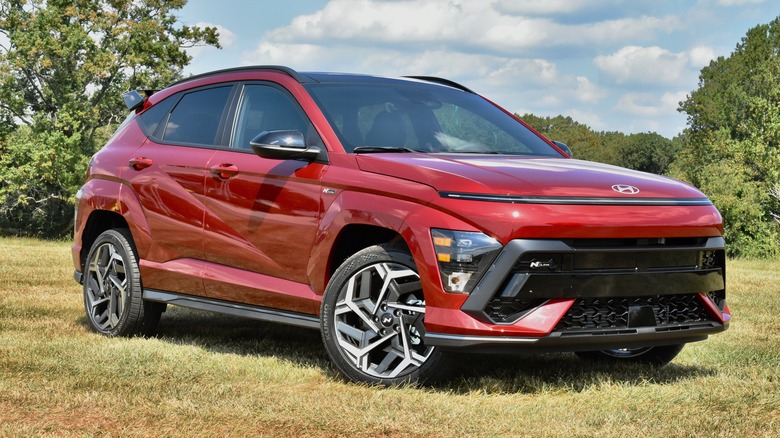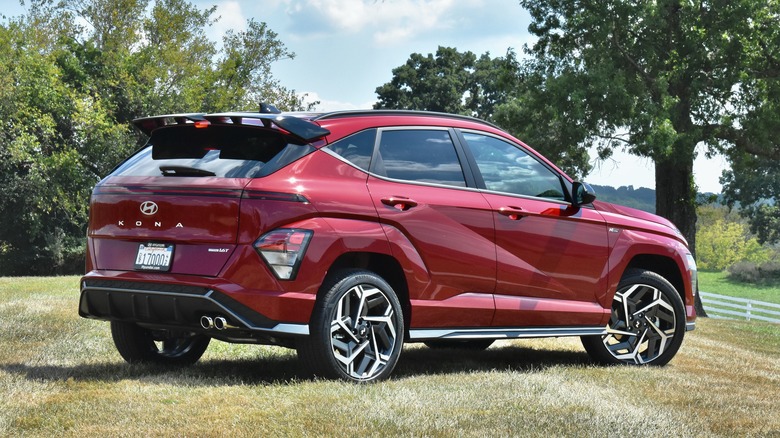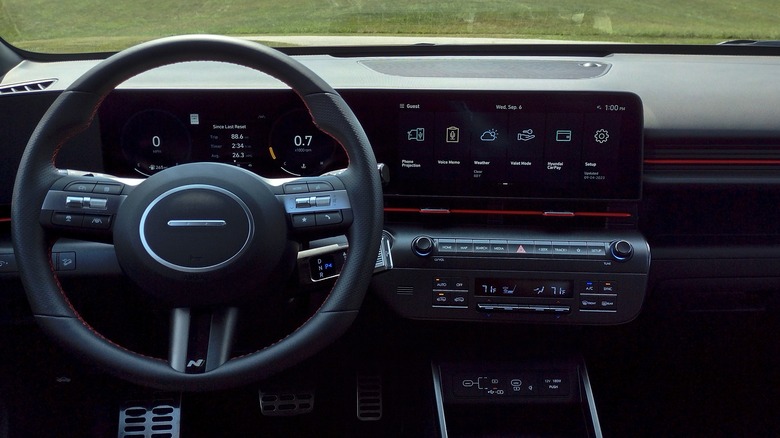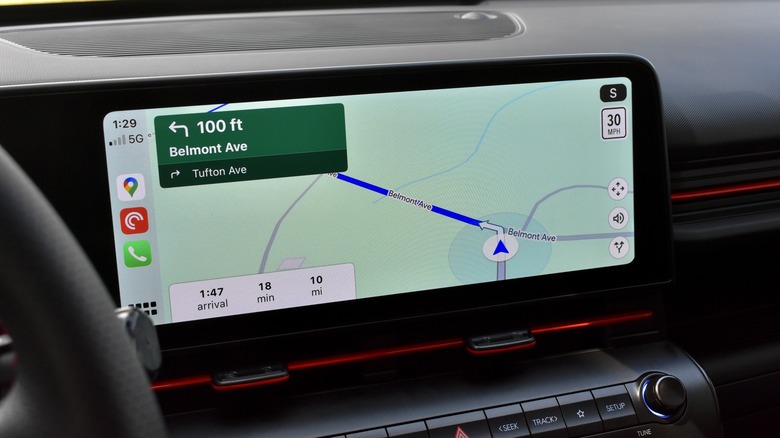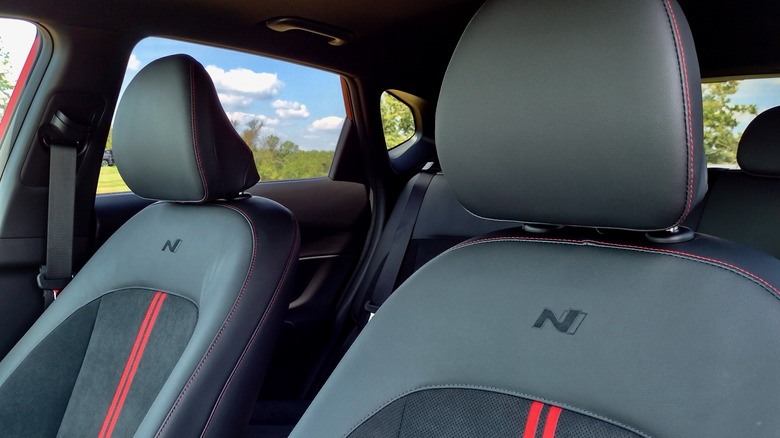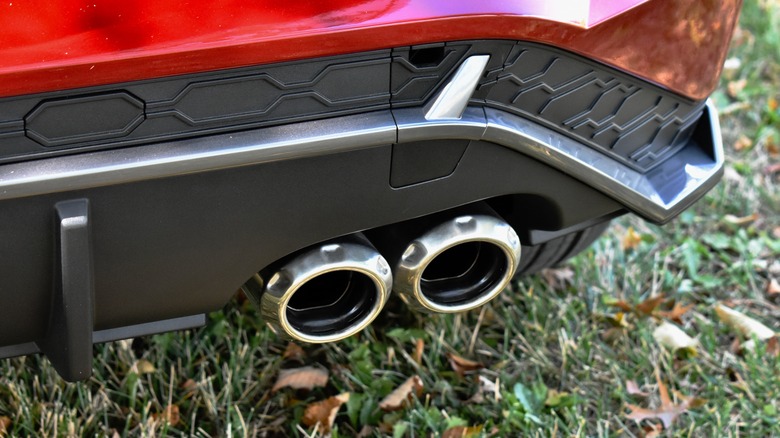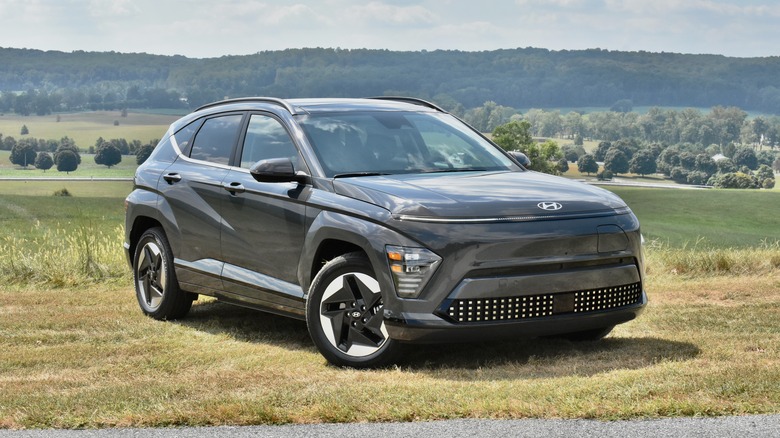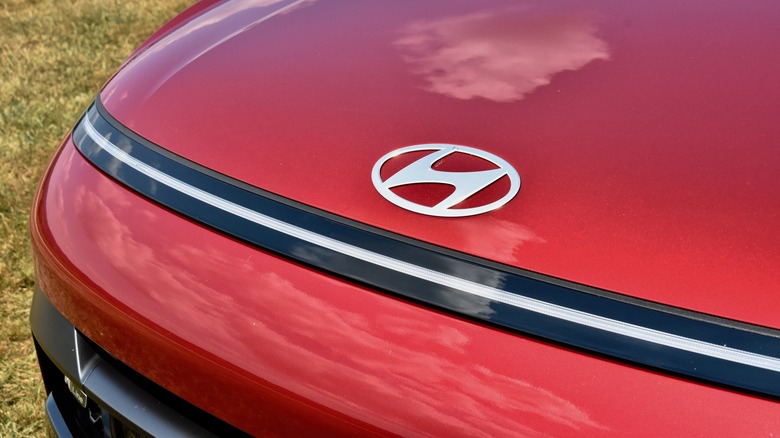2024 Hyundai Kona First Drive: Affordable Compact Crossover Avoids Mission Creep
Not every car needs to introduce new technology, or be clothed in industry buzzwords, to be noteworthy. Sometimes just being a good car, without being boring, is enough. For the past few years, that's exactly what the Hyundai Kona has delivered.
Launched in 2018, the Kona is one of many small crossover SUVs that essentially trick image-conscious consumers into buying small hatchbacks by combining the form factor of those cars with more rugged styling that says "active lifestyle" rather than "cheap." The first-generation Kona distinguished itself with unique styling, a well-executed EV variant, and a high-quality driving experience unusual for these entry-level vehicles.
After five years on sale, though, the Kona is due for a redesign. And with its competitive set more crowded than ever—Hyundai says it now numbers 20 models—the redesign needed to be thorough. So Hyundai completely changed the styling, made the 2024 Kona bigger to increase cargo space, and gave it new infotainment hardware that will soon propagate to the rest of Hyundai's lineup.
New design direction
The new Kona certainly looks different. Some of the previous model's SUV-like styling elements have been ironed to neat creases, making the new model look more like a Star Wars prop than a wannabe off-roader. Hyundai did jack up the ride height, however, giving all-wheel drive models 8.3 inches of ground clearance. That's second only to the Subaru Crosstrek in this market segment, Hyundai notes, but the raised ride height doesn't really work with the rest of the styling elements.
The 2024 Kona retains the previous generation's distinctive stacked headlights, but now features visor-like LED strips across the hood and tailgate—part of a new design language that will also appear on the Sonata and Elantra sedans for 2024. The light strips feature the same pixel elements as the Hyundai Ioniq 5 and Ioniq 6 EVs, and a Z-shaped indent on the body sides comes straight off the Ioniq 5. Unlike the previous generation, the electric version of the 2024 was designed first so, in addition to the Ioniq references, gasoline models get the same smooth front end (with active grille shutters) as the Kona Electric model.
This means most gasoline versions do indeed look like the electric version, minus the charge port, which is unusually for a car that will mostly be sold with gasoline engines. Kona N Line models embrace their internal-combustion DNA with prominent exhaust tips, a sporty body kit, and a rear big spoiler. As with the previous-generation Kona N Line, however, the upgrades are only visual. Hyundai hasn't confirmed plans for a new Kona N with actual performance upgrades.
Added utility
The Kona is still a small car, but it's also 5.7 inches longer, an inch wider, and 2.6 inches taller than its predecessor. Hyundai stretched the wheelbase by 2.3 inches, but the most noticeable difference is added length aft of the rear wheels, which likely contributes to the new model's added 6.3 cubic feet of cargo space. That addresses the biggest issue with the previous-generation Kona, which didn't offer much more cargo space than an ordinary sedan. At 25.5 cubic feet, the new Kona has more space behind its rear seats than a Subaru Crosstrek or Honda HR-V, but still less than a Kia Seltos or Toyota Corolla Cross.
Hyundai also improved interior functionality, applying a version of the open-plan design from the Ioniq models. Instead of a large raised center console with a couple of cupholders and a storage bin, Hyundai left most of the space open and kept the console close to floor level. This creates a lot of options for holding all sorts of personal effects, and means they don't block dashboard controls. The shifter has also been moved to steering column, freeing up more space.
The interior has a distinctive look as well. The instrument cluster and touchscreen, placed side by side to create one long screen in the current fashion, sit on a neatly defined shelf, with a pod of buttons for the climate control and other functions below. Everything looks like it was arranged consciously, rather than just stuck where it would fit. This design also keeps the dashboard fairly low and thin, creating a feeling of spaciousness and, along with a hood that's been lowered compared to the previous-generation, Kona provides good forward visibility.
More tech
The 2024 Kona debuts a new infotainment system that includes a standard 12.3-inch touchscreen, greater processing power, and separated modems that allow for over-the-air (OTA) software updates. One of these updates will add wireless Apple CarPlay and Android Auto to navigation-equipped models. This finally addresses a longtime quirk of Hyundai infotainment systems, in which only base versions got wireless Apple CarPlay and Android Auto, while high-end versions still required a cable.
The new screen, as well as the 12.3-inch digital instrument that comes with higher trim levels, had crisp and simple graphics, and everything was laid out logically. This was also true of the previous-generation Kona infotainment system, granted, but older models had smaller screens measuring 8.0 inches on base versions and 10.25 inches on higher grades, so this is definitely an upgrade for tech enthusiasts.
Hyundai also added some tech features from its other models that weren't previously available on the Kona. The highlight is a very useful blind-spot camera system that shows a camera view in the instrument cluster when the turn signal is activated. The 2024 Kona is also available with digital key functionality, allowing drivers to use a smartphone or smartwatch in place of the key fob, and Remote Smart Parking Assist. It now comes with four standard USB ports as well. An available Hyundai Pay feature lets drivers reserve parking spots via Parkopedia from the main touchscreen.
Carryover powertrains
One area where the redesigned Kona doesn't see much change is under the hood. Gasoline powertrains still include a standard 2.0-liter four-cylinder engine and a 1.6-liter turbocharged four-cylinder for higher trim levels. Front-wheel drive is standard with both engines, with all-wheel drive available. The base engine also continues with a continuously variable transmission (CVT), but the turbo engine now comes with an eight-speed automatic instead of the previous seven-speed dual-clutch transmission.
The base engine also produces the same 147 horsepower and 132 pound-feet of torque as before, but the turbo engine's 190 hp and 195 lb-ft of torque represents a 5-hp drop. Hyundai attributes that to stricter emissions rules. Fuel economy is down slightly as well, to a best of 31 mpg combined with front-wheel drive and 28 mpg combined with all-wheel drive, compared to the previous 32 mpg combined and 30 mpg combined with front-wheel drive and all-wheel drive, respectively. That's to be expected in this slightly larger version, according to Hyundai.
The new hybrid powertrain being introduced in overseas markets would definitely help with gas mileage, but Hyundai decided not to bring it to the United States. The existing mix of gasoline and all-electric powertrain options "is an effective strategy" that works sales-wise, so Hyundai saw no need to change it, Ricky Lao, Hyundai Motor America director of product planning, said in a presentation during the Kona media drive program.
A pleasant driving experience
Hybrid aside, there's a lot to like about the gasoline Kona. At least, if you go for the high-end N Line and Limited models with the 1.6-liter turbocharged engine and all-wheel drive, which was what was on offer for this first drive.
As in the outgoing Kona, the turbo engine pulls strongly from a stop all the way up to highway speeds, providing fairly consistent power throughout. The new eight-speed automatic transmission is smoother than the outgoing dual-clutch gearbox, especially when accelerating and decelerating on city streets. The old transmission may have shifted a bit quicker, but that wasn't missed.
All-wheel drive models also get a more sophisticated multi-link rear suspension in place of front-wheel drive models' torsion beam, which contributes to excellent ride quality. Even on cobblestone streets, the Kona damped out bumps with minimal bouncing. The above-average ride was matched by low interior noise—the result of numerous sound-deadening tweaks including new bushings, soundproof floor padding, and even sound-absorbing pads in the optional 19-inch tires—giving the Kona road manners to rival larger, more expensive crossovers, and puts less-refined rivals like the Toyota Corolla Cross to shame.
While the Kona wasn't boring to drive, it wasn't exactly sporty either. It started to lose its composure fairly quickly in aggressive cornering. Performance used to be the job of the Kona N, but Hyundai hasn't confirmed whether there will be a new version of that model.
EV question mark
The Hyundai Ioniq 5 and Ioniq 6 may get most of the attention these days, but the Kona Electric has always been a solid entry-level EV.
For 2024, the Kona Electric will be available with two battery and powertrain configurations. The base SE gets a 48.6-kilowatt-hour battery pack affording an estimated 200 miles of range, with a single electric motor sending 133 hp to the front wheels. SEL and Limited models have a 64.8-kWh pack, an estimated 261 miles of range, and 201 hp. Both versions are rated at 188 lb-ft of torque.
Specifications for the SEL and Limited models nearly match the outgoing Kona Electric, which was EPA-rated at 258 miles and generated an identical 201 hp. Torque was substantially higher, at 291 lb-ft, but a prototype of the new model felt plenty eager off the line. Drive time in the prototype was limited, but overall it didn't feel substantially different from the outgoing Kona Electric.
However, the 2024 Kona Electric gets a more powerful onboard charger with maximum charge rate of 10.8 kilowatts, compared to 7.2 kW for the old model. This cuts the Level 2 AC charge time by about three hours, according to Hyundai, to six hours and five minutes for a full charge. Unlike the Ioniq models, however, the Kona Electric still uses a 400-volt electrical architecture, meaning a DC fast charge from 10% to 80% takes a substantial 43 minutes.
With so few affordable EVs currently on sale, the price of the small-battery SE model might be the most significant thing about the redesigned Kona Electric. Hyundai isn't ready to discuss pricing yet, but hopefully the brand will do what sibling failed to with its Niro EV and EV6 and price the Kona Electric appreciably lower than its dedicated EV models.
Still the same where it matters
In the meantime, gasoline Kona models start at $25,435 (with destination) for a base Kona SE with the 2.0-liter engine and front-wheel drive. A decent amount of standard equipment is included at this price, including the 12.3-inch touchscreen, 17-inch alloy wheels, and a healthy array of driver aids, although adaptive cruise control only becomes available starting with the SEL with Convenience Package, with carries a $28,985 MSRP.
Pricing runs up to $32,985 for the top Kona Limited model, which adds the blind-spot camera system, leatherette upholstery, a hands-free liftgate, heated and ventilated front seats, a heated steering wheel, Remote Smart Parking Assist, and a Bose audio system. That long list of equipment still makes the Kona a decent value at that price, and the overall pricing structure is consistent with rivals.
Hyundai has changed a lot, but its designers, engineers, and product planners didn't forget what made the Kona good in the first place. The Kona is still small and affordable, but delivers more than the bare minimum when it comes to design, features, and the driving experience. That should help the redesigned Kona continue to stand out among its many rivals, and once again shows that small cars don't have to be basic and boring.
